Continued from yesterday”¦ As we trudged up, we passed through a clearing with two small buildings surrounded by a grassy field. They were well maintained and looked like they were actively used as vacation houses. Christi was amazed that anyone would want to be in such a remote place, with such a long hike down to the closest village. And there wasn’t much of a village there, for that matter. To get to the nearest grocery store was a fairly long drive. Antonio explained that in the olden times, these were summer houses. One building was for the people, the other(s) for the cows and goats. Farmers would bring their livestock up for the summer to graze in the cleared fields. The farmers made cheese and other goods, then would go to their winter homes lower down on the mountain.
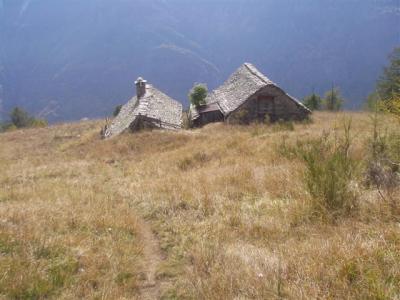
We continued upwards through the forest, and passing through two or three more of these cleared areas. Each clearing had two or three small buildings in the traditional style with a circle of grassy fields around them. They were all abandoned, which Christi thought was no surprise. They were too high up and too isolated to be practical. We stopped for lunch in a shady spot in the forest.
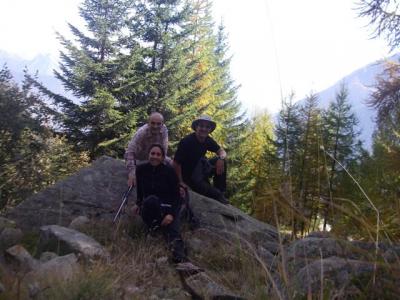
After lunch, we continued up and came to yet another house. This one was clearly lived in. It was beautifully maintained and cute as a button. Ever since we parked, we had felt like we were on the set of the “Sound of Music”, but this particular house and clearing gave us the overwhelming desire to sing “doe, a deer, a female deer, ray, a drop of golden sun”¦.” and dance around in the grass. We may have if we weren’t so tired and breathless.

We were at 1850ish meters. We had hiked a good 400 500 meters from the car, practically straight up. Christi had tried not to complain, but Antonio must have sensed that she couldn’t take any more, so he suggested we turn around, even though we hadn’t made it to the top. It was definitely worth all the effort for that view. We had made it a good 80% of the way up, though, which is nothing to sneer at. This is Christi at the mile marker.
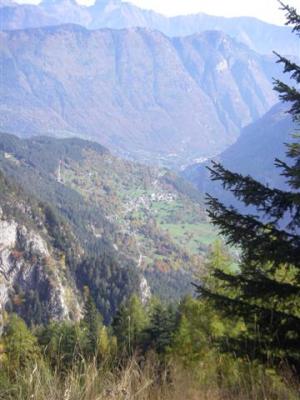
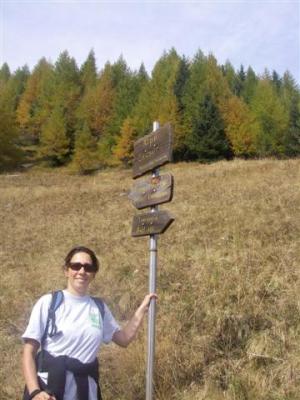
We got back to the car and headed to the closest small city, Domodossola, where we stopped for ice cream and beverages. Then we went to the town of Vogogna, a nearby medieval village that has been continually inhabited ever since it was built. We know, half of Europe was built in the medieval times, so why is this village special? The reason is because little has changed within the village since then. The castle and church still stand intact, and many of the houses still have the stone roofs like the ones we saw on the mountainside.
Our first stop was the castle, which was built in 1348 as a fortress for military use only. It is now used as a museum and conference center. The castle itself is pretty similar to other castles we have seen on the inside, but the outside has less defense mechanisms than we are used to seeing. Usually, castles have a moat surrounding the full exterior walls, and often there is a second wall behind the first wall to protect the inner area. This one has no moat, only a partial exterior wall, and no secondary wall within the exterior walls. Usually, castles are artificially elevated, this one is built into the natural hill. That said, this castle is much better kept than most and has an especially nice courtyard area. The views from the watchtower are nice, but we suppose that is a prerequisite for choosing a tower location. The first shot is of the small doorway into the watchtower from the incredibly steep and narrow staircase. The second is the view
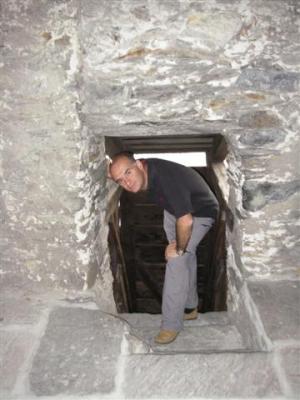
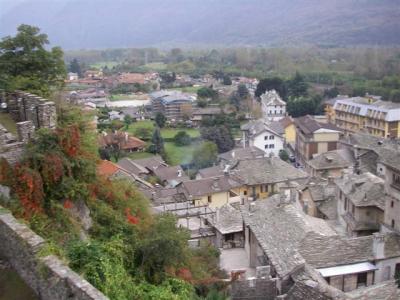
The museum portion has a sparse and eclectic array of displays. The signs are all in Italian, so we didn’t understand any of it. One display was about how they used to mine marble out of the local hills and transport it down the river to Milan. Antonio explained to us that most of the marble went to the Il Duormo in Milan. There were a few photos. One was of people riding down mountains on humungous blocks of stone. Another was a huge team of oxen pulling just one stone to the river on a cart. Seeing how big and heavy those stones are really makes you respect what a feat it was to build these spectacular buildings in the olden days. There were also several tools that were used in the marble cutting and transporting process. Another display that we couldn’t read featured a portable typewriter and an adding machine, both probably circa late 60’s or early 70’s. Christi’s mom had the exact same typewriter and the whole family used it until she was in high school, then the family got hip and upgraded to a word processor. You know you are getting old when things from your teen years are on displays in a museum. Very depressing. It was kind of weird to see the modern conference center in the castle, but we think it is a smart use of the space. Castles generally have some big rooms perfect for large groups.
The town also looks much the same as the rest of the medieval towns we have been to lately, except with the different roofs. It is small, made up of only a few blocks, and totally cute and charming. Like Ortygia, some of the buildings are well maintained, including a few houses that look like doll houses, and some aren’t. The first picture is the town hall, built in 1374 and the second is the church.
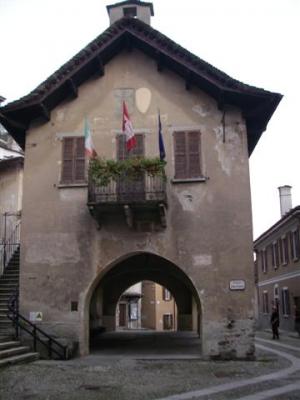
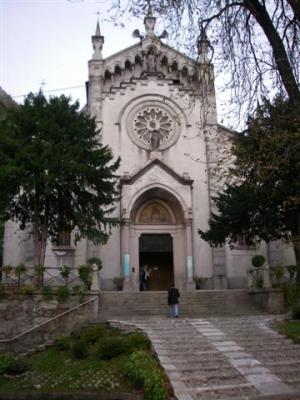
After we had made our rounds through the town of Vogogna, we headed back to Milan where we met up with Andrea, Francesca and a couple of their friends. We all went out to a pizzeria for dinner. The pizza was awesome and we were sad to find out we’d never see pizza like this again anywhere else in the world. Francesca also explained to Christi that in Italian, pepperoni means bell pepper (capsicum). All these months Christi has been baffled about why they put pepperoni on the vegetarian pizza. Oh, and Francesca was still sick, but feeling better than she was this morning.
It was another late night.
